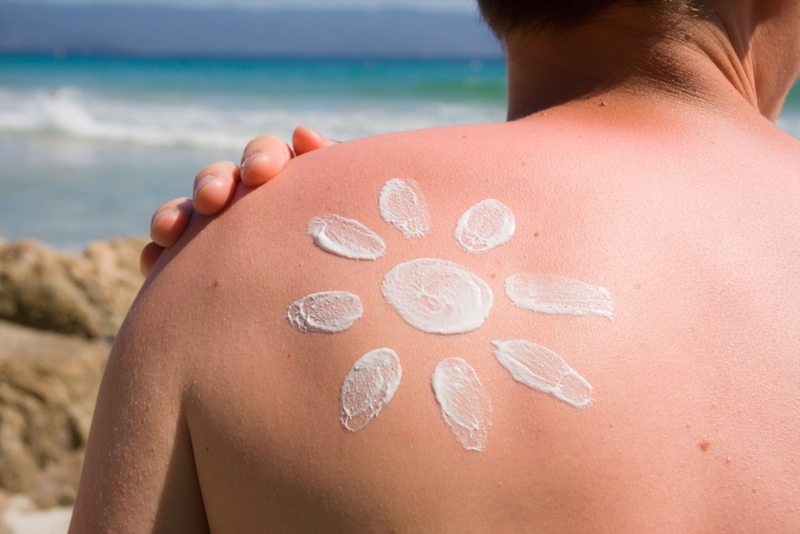New Sunscreen Recommendations for 2017: Here's What to Look For

Not all sunscreens are created equal: Nearly three-quarters of sunscreens are either ineffective or contain chemicals that could harm your health, a new report finds.
The Environmental Working Group (EWG) released its 2017 Sunscreen Guide today (May 23), just in time for summer. The EWG is an independent advocacy group focused on public health and environmental issues based in Washington, D.C.
For the report, researchers at the EWG reviewed nearly 1,500 products, including sunscreens, moisturizers with SPF and lip balms, according to the group. Just over one-quarter of the 1,500 products met EWG's strict guidelines: about 300 sunscreens, just over 100 moisturizers and nearly 40 lip balms. [5 Things You Didn't Know About Sunscreen]
EWG researchers focused on five factors to evaluate each product.
The first thing the researchers looked at was whether the product contained ingredients that may be harmful to a person's health. In addition to studying the effects these ingredients could have on a person's skin, the researchers also looked at how the sunscreen was supposed to be applied. For example, a spray-on sunscreen could be harmful if inhaled, they noted.
The four factors remaining all related to how well the products worked, and included how well the products blocked both UVA and UVB rays (both of which can damage the skin and cause skin cancer), and how much a product's active ingredients break down in the sun (once the ingredients break down, they are no longer effective). They also examined the balance between UVA and UVB protection. A sunscreen's SPF, or sun-protection factor, refers only to how well the product blocks UVB rays, the EWG says.
The researchers gave each product a score of between 1 and 10; the lower the score, the better. In their guide, only products that received a score of 2 or lower are recommended.
Sign up for the Live Science daily newsletter now
Get the world’s most fascinating discoveries delivered straight to your inbox.
Although the report concluded that just over a quarter of the products in the report met the high standards set by the EWG, in the past decade, there have been improvements in sunscreens.
For example, the percentage of "mineral-only" sunscreens doubled from 17 percent of all sunscreens in 2007 to 34 percent in 2017. Mineral-only sunscreens are those that include zinc oxide or titanium dioxide as their active ingredients. These mineral ingredients are known as physical sunscreens — they sit on top of a person's skin and physically deflect the sun's rays, according to the Skin Cancer Foundation. Other sunscreens contain chemical ingredients; instead of deflecting the rays, they absorb the rays.
Mineral-only sunscreens are stable in sunlight (meaning that they don't break down). They protect against both UVA and UVB rays and don't often contain harmful ingredients, the EWG says.
The EWG also noted that nearly all sunscreens they analyzed for the new report block both UVA and UVB rays — in other words, the sunscreens are "broad spectrum." [How to Protect Yourself from Sun and Heat in 2017]
In addition, the percentage of sunscreens containing the ingredient retinyl palmitate, a type of vitamin A, has decreased since 2010, from 40 percent to 14 percent, according to the report. Retinyl palmitate has been linked to skin tumors in animal studies, the EWG says.
Sunscreens for kids
The EWG report also highlighted the best and worst sunscreens for kids.
Although many products are advertised for kids or babies, the Food and Drug Administration doesn't set any specific criteria when it comes to children's sunscreens. This means that there are no differences between these products and those advertised for adults.
The EWG identified 19 sunscreens (listed here) that made the cut as the best sunscreens for babies and kids. In addition to the products having the lowest possible score, the researchers also looked for lotions instead of sunscreen sticks (sunscreen sticks aren't well-applied, according to some studies), fragrance-free products and water-resistant products.
The sunscreens that came in at the bottom of the list (found here) contained ingredients that could be harmful (such as oxybenzone and retinyl palmitate), had very high SPFs or were spray sunscreens. The EWG noted that "sky-high" SPFs, which include those over SPF 50, refer only to how well the products block UVB rays, not UVA rays. Because UVB rays are what make a person's skin turn red, they can give people a false sense of security: A person may think that just because his or her skin isn't reddening, no damage is being done, and it's OK to stay in the sun, the EWG says.
And spray-on sunscreens often aren't applied evenly, meaning a person can miss a spot, or apply too little in some areas, according to the report. In addition, inhaling these sunscreens may be risky.
Originally published on Live Science.











